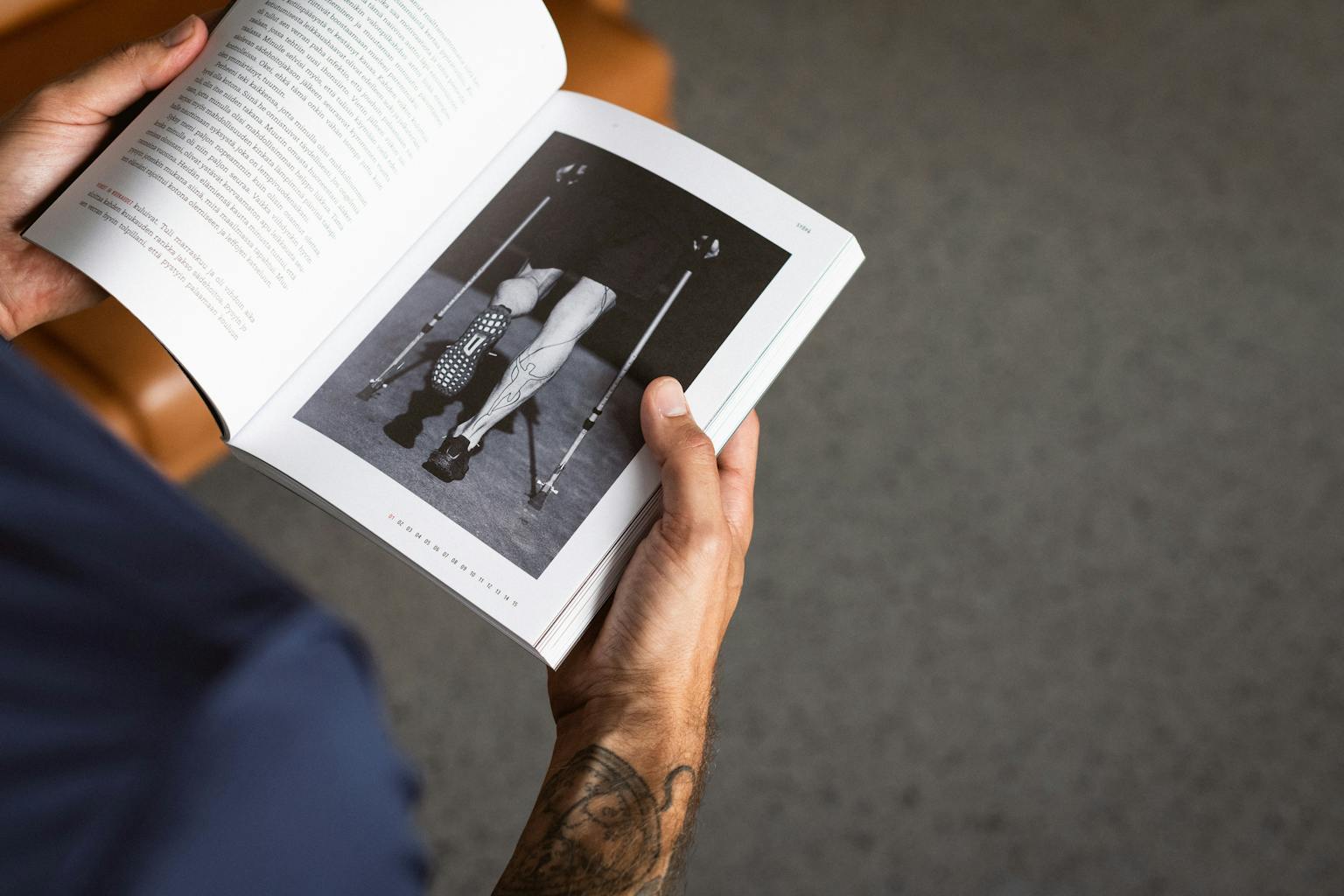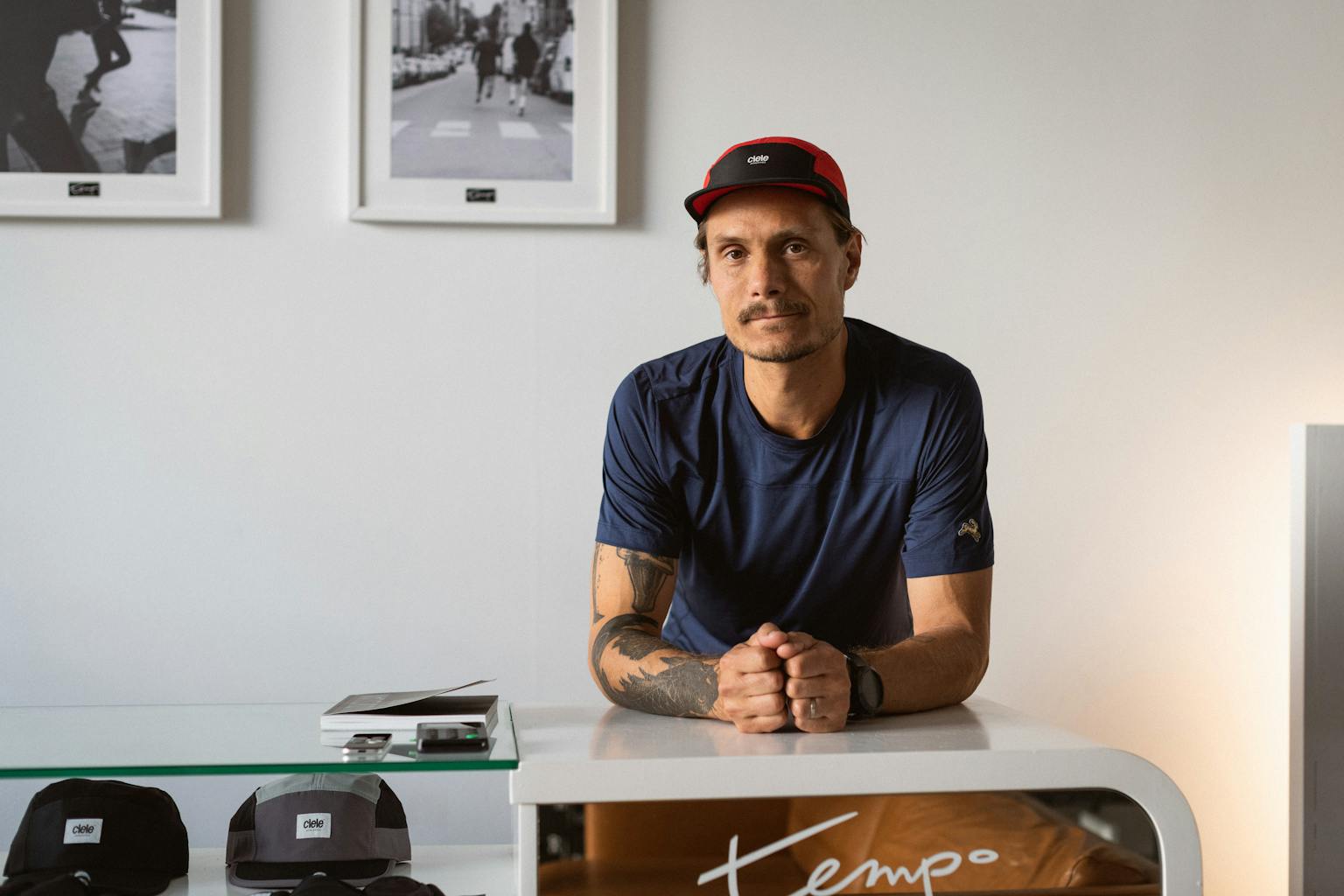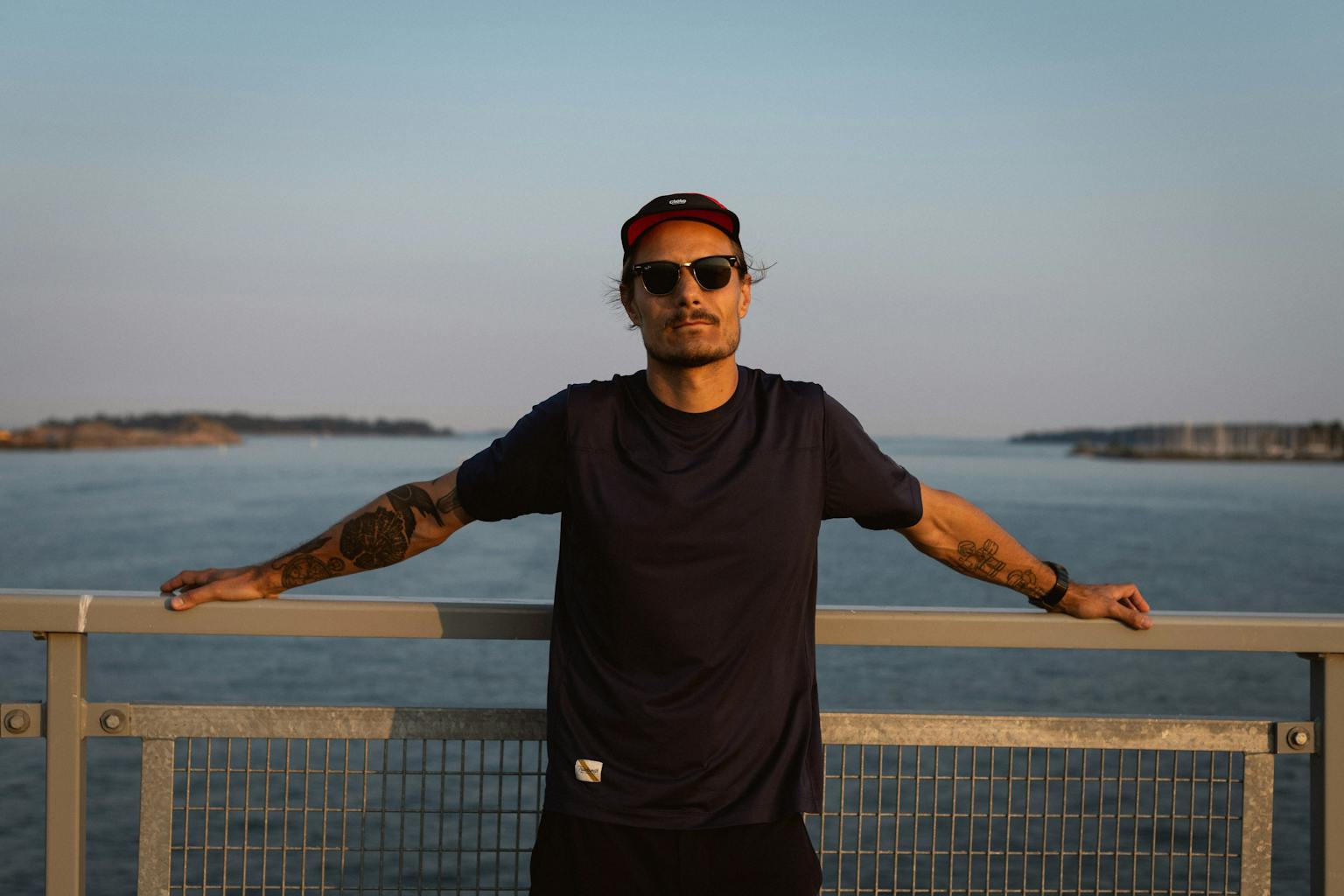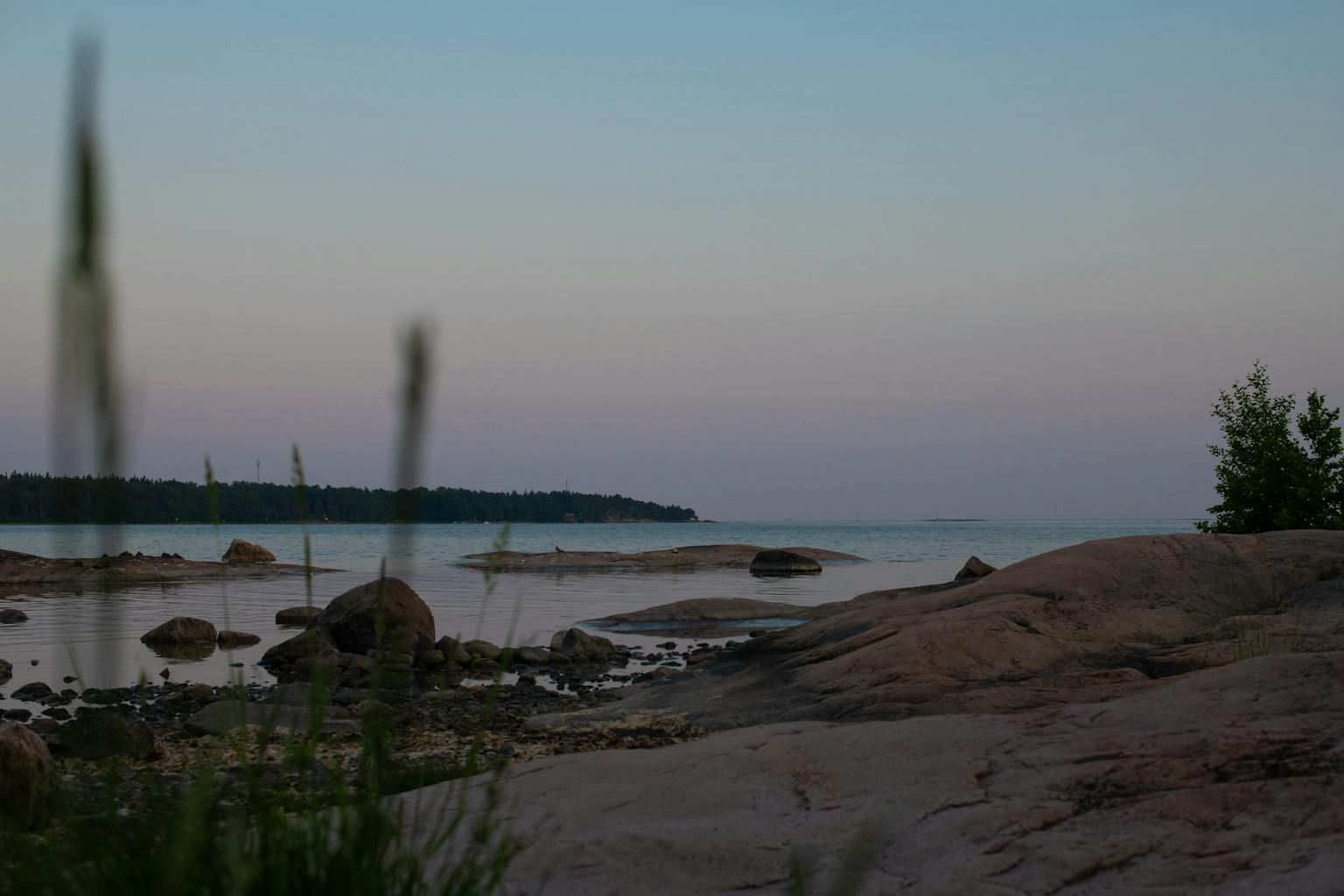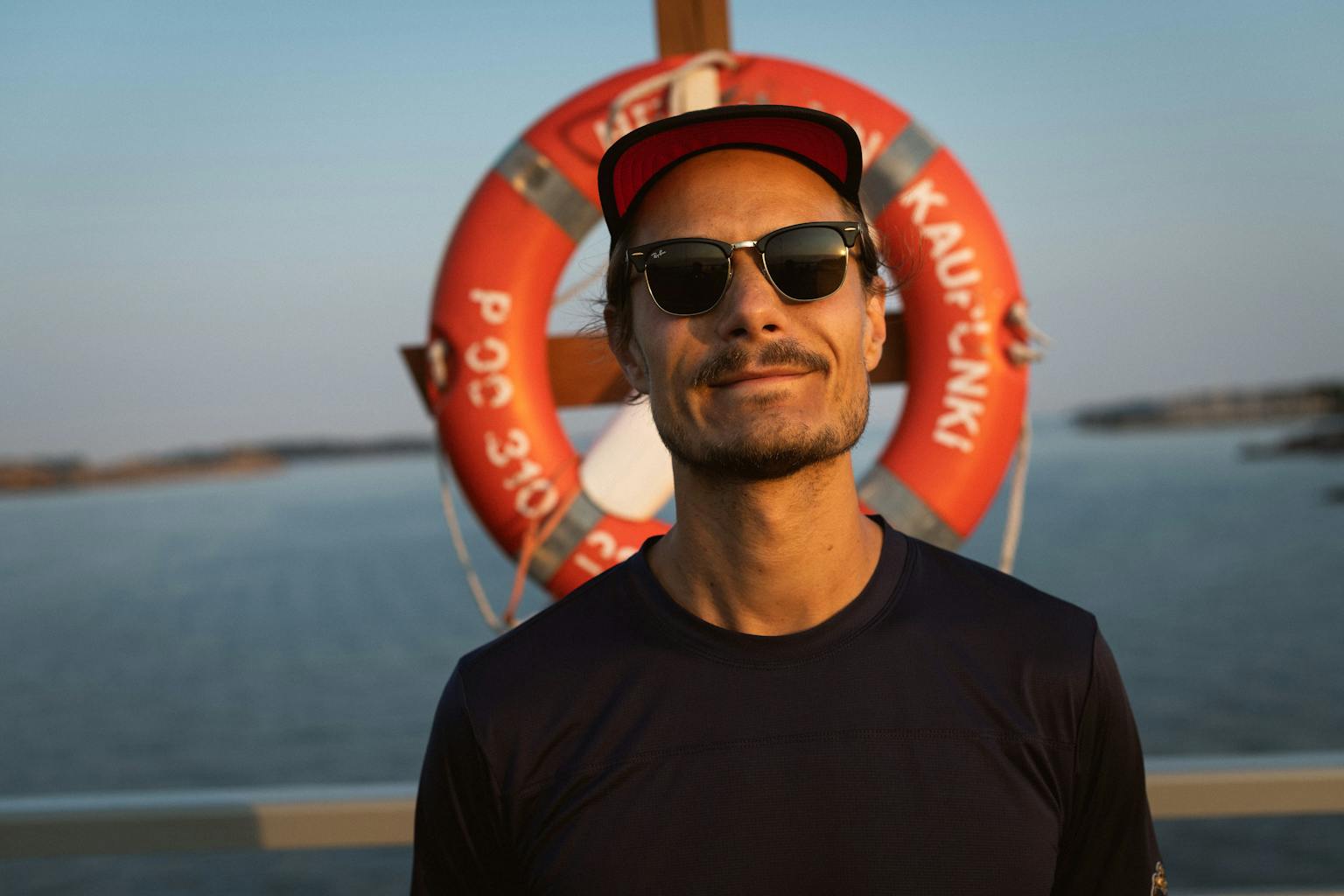

The Finnish Line
Exploring Helsinki with Joonas Laurila
Photography and Interview by Christian Brecheis
There’s no such thing as a standard route into running, but even in a world without orthodoxy, Joonas Laurila’s start stands out. Diagnosed with cancer in his ankle as a teenager, the Finn underwent surgery that required his whole foot to be rebuilt. It worked, but with nerve damage in his feet, his days of playing high level soccer were over. But running? Running was something he could excel at - and continues to do two decades later.
Now the owner of the Tempo Running store in the north of Finland’s capital city, Helsinki, Joonas is a mainstay of the local running community, leading runs, coaching, and driving the culture forward. METER caught up with him to learn a little more about the Finnish scene and his approach to the sport.
I’ve run throughout my life, but it was really the cancer in 2000 that changed my life. I was really good at school, then I was going in the wrong direction, having too much fun and the cancer happened, all of a sudden. I didn't realize how much it would affect my life.
I met with the doctor (who was one of the best in Finland) and he was a really brutal guy. He took a marker and drew a line and said, “okay, if we cut your leg from here, the cancer won't ever come back. Or we try this surgery and you might have a chance that it doesn't come back.”
I was 18, so it wasn't really that hard decision to go with surgery. It took eight hours. My heart stopped in between. They built the whole foot from scratch. They managed to save some nerves so my big toe is working, which is really crucial to running. But I couldn't do a lot of team sports anymore. And of course, when you're 18-years-old, you’ve got your whole life in front of you and spending two years in walking sticks is a really hard time. I realized that school is really important, which led to my first job in the running industry.
I found out that it was really hard to sell running shoes if you don't run in them. So I bought a lot of shoes and I realized, “okay, this is really the feeling that I was looking for.” That was the feeling that I got when I was doing team sports. I was always the best runner on the team when it came to endurance. Those long runs and hill reps were fun for me while the others hated it. I realized, “okay, maybe this is really the thing that I really want to do.” I got a friend who started running at the same time. We were two newbies just figuring out what to do. So we grabbed this crazy French guy, a top orienteer who had this program for half marathons, and thought, “what the hell, let’s try.” I ran like 1:30. I was quite surprised with the pace. I had never run that fast before and I think then I was like, “oh shit, I have to do a marathon.” I immediately started to train for a marathon. Then I got a runner's knee. That was the first sign of me saying, “what is running going to take from me if I want to continue to run?”
After recovering from the runner's knee, I felt that, “okay, it's time to do things differently and really focus on my gait and really start working my body, doing strength training and really see where it takes me.” It was a bumpy road, but I managed to get on the line and beat my chest in Stockholm 2010.

I trained for about a year and did 3:11 on my first marathon. I was really happy about it, but still quite bummed because I thought that three hour mark was really something that I could do. If you compare the half marathon and the marathon time, it was on point, but I thought, “okay, what do I need to do more to go below three?” And the next year I did 2:57, and the year after that I did 2:48. So it's been constantly evolving, but I had the fire in me.
I started working with Adidas at the same time. I started coaching people and expanding my knowledge and spreading it to runners. But I was struggling in my personal life because running took so much time. I was just enjoying that I had something to do by not worrying about cancer. I could feel alive when I was running. But I pushed and pushed and pushed harder on my workouts and liked using all my excess time to run and coach. That led to problems with my Achilles tendon and they had to cut it.
I was in really good shape before Boston in 2015, a year after I did my PB (2:48). And then it created tendinosis. I did two months on the bike and jumped on a plane and ran Boston. I did 2:50 there, with a broken foot and realized, “okay, you don't have to run so massively, to really improve yourself, but you have to be smart at what you're doing. And also balance your life and figure it out.”
After Boston, I pretty much stopped competing. I realized that there's so much more, like kids, who jumped into my life a couple years later, and a wife. Family is much more important than running to me. But I also like building energy and I like to be energetic all the time. It’s really hard for me to say when I'm tired, but I'm getting smarter. It's more about running every day, having fun with friends and really finding your way to run.
When COVID happened, we were unaware, saying “can we run together? Will it stop us?” We had to stay at home. But, then they said, “if you're running like two or three guys together, it's okay.” So we created these groups to just run and drink. We drank beer in the middle of nowhere, just enjoying our company. It’s really something that has changed my life. And I think it changed lots of my friends' lives as well.
In Finland, professional runners usually have to work. Of course, social media has changed a lot these days and you can make a lot of money from social media. But in general, Finland has different levels in the sports union where you get like $5,000, $10,000 or $15,000 a year for some help and most people still have to work. It’s a really shitty deal. Some people, those really old school guys who do timber work and walk more than run, still do marathons. All those hardcore running lovers love that. The Protestant ethic: you have to suffer in order to succeed. But quite frankly, these days, if you think about hockey players or football players who make so much more money than runners, it's sexier. It’s why I think that running has to change, in order to succeed. And it has in several countries already, like in Germany, France, the UK, the US.

Another thing, small brands are really growing. They’re evolving and creating something beyond running; they’re thinking of things so differently that you wouldn't believe that they are runners. But still they are doing it. That attracts people versus a brand doing clothes solely for running. Quite frankly, I think smaller brands are more into details. They're more into materials, production methods, the ethical part of building a garment. It's really nice to support those brands and I think the customers are more into that.
I was in Adidas for almost 10 years. It was an amazing time, but at the same time, we raised Adidas to the top brand in Finland and then when they transferred Adidas away to Sweden, it dropped down fast. I had this moment where I realized that you have to be on top of things all the time. Otherwise people forget, or some other brand comes in. And of course, it's not about the brand, it’s about the runner; it’s about creating memories and experiences and finding new things about running. If you think of trail running, it's not about the speed, but the views. If we're running in the alps, it’s more about creating memories and good moments and enjoying life through running. It's also because we are living in such a hectic world.
I might do a race, but it's more about if I want to race fast. I want to change my PB and I would be happy to see myself breaking 2:40. I pretty much run without any program. I run fast when I feel like it and run slow when I feel tired or just don't have the motivation to run fast. I'm in overall better shape than I was in 2014 when I hit my PB. I'm turning 40 next year so it's a different game. It's easier to get to Boston because of my age. We'll see where and when. We usually like to pick the cities that have good restaurants and other activities. Good beers, breweries, all that. It's not just about running.
Running keeps me alive and energetic throughout the weeks which are pretty hectic, but I'd like to be involved in municipal decision-making. Right now the city’s engaged, doing a lot for cyclists. That's a good beginning, but still if I run fast on a sidewalk, it might be a bit dangerous for me and the walkers. I’d like to see how the city could do something more about running.
We have to find an odd type of person to join a running community. For example, I'm running a lot with chefs and you wouldn't believe that they are runners. Their working hours are insane from the restaurants but they just go for fun and are really active guys, going on super early runs. It's about reeling those types of groups into a broader running community. If they want to come, great, if they want to stay separate that's okay. We have to allow that. If you try to bend everything through a certain direction, you usually get bored.
